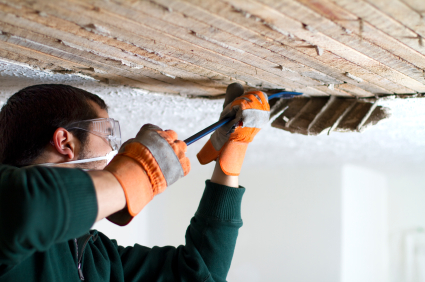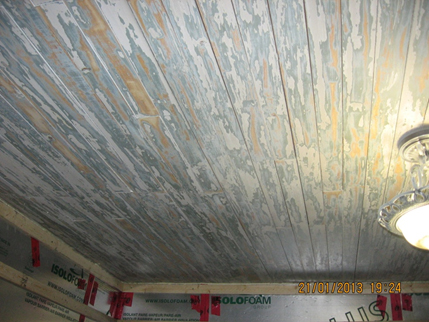
In one of the older rooms of your house, you may have 12 in. x 12 in. acoustic tiles (pressed cardboard) as a ceiling. These tiles were ultra popular in basements in the 70s.
You’ve decided to cover the ceiling with drywall panels (plasterboard), but your curious nature leads you to ask if the original ceiling would be recoverable.
And you find a tongue and groove plank ceiling. Good news: it’s in good shape.
So what can you do to give it a second life?
- To begin with, clean the gaps between the boards to remove excess paint and to ensure that they’re as straight as possible. Word to the wise: this job requires a lot of patience.
- Next, sand the parts where the paint is peeling. Be sure to wear safety goggles and a mask, because the paint very likely contains lead.
You may notice that in certain places the space between boards is such that it doesn’t properly connect to the adjacent plank. Fine dust and solid particles could fall with the slightest vibration. It’s preferable to fill these spaces with an acrylic sealant that provides flexibility for variations in humidity. This material can also be painted.

Winter is a great time to do this work because the low level of humidity in our homes causes wood to contract, leaving a maximum of space in the joints.
As a result, the joints remain clean and stable for much longer. And when the boards swell with high humidity, the acrylic sealant constricts.
On the other hand, when a sealant is applied on wood that’s less dry, over time it can crack with the heat.
Once this prep work is finished, you just need to paint. Opt for a flat paint to help hide surface imperfections. Now enjoy your “new” ceiling!
Photos : Casarazzi et iStockphoto LP